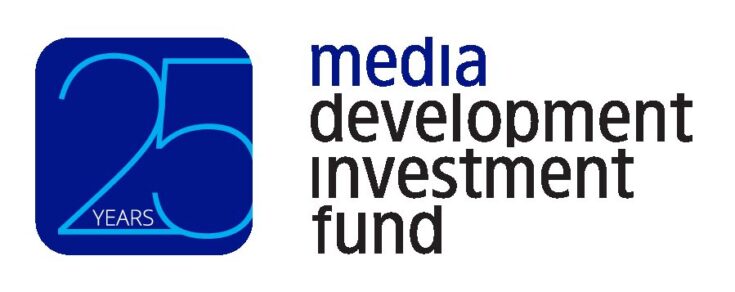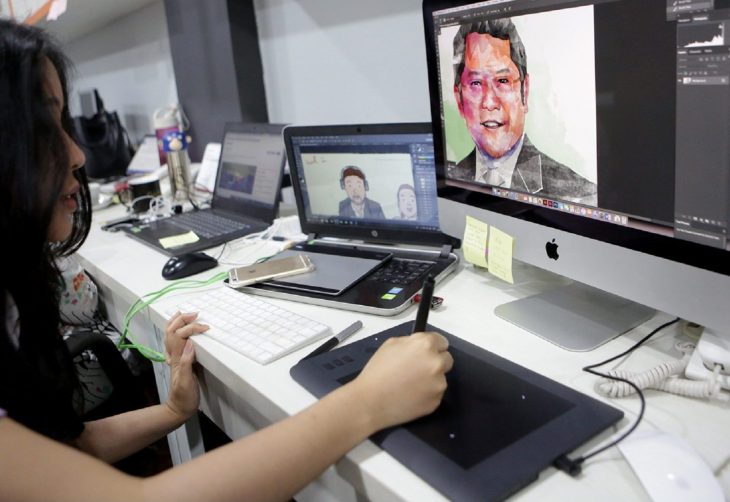By Magdalena Skrzypek, Impact and Communications Manager.
For a decade, the media industry has been undergoing one of the most intensive periods of disruption in its history, with rapid technological changes presenting unprecedented challenges – and opportunities – to media organisations.
New business models such as subscription and membership have been accelerated, but in most cases, this has still not come anywhere near making up for lost income from the demise of printed newspapers. With more than 60% of the world’s population having access to internet, all media that don’t already have an online presence need to move towards a digital future.
MDIF as an organisation had to adjust to this shift too. Over 25 years in operation, we have invested in 132 independent media businesses across 44 countries around the world, beginning with loans to traditional media companies in countries transitioning from communist systems to free markets back in 1990s, to equity investments in innovative digital news and information startups in emerging markets in 2020s.
And like the most successful media businesses, we have learned that we need to stay ahead of ongoing digital transformations if we are to prosper.
When new media was new
With our first loan in 1996, MDIF was created to respond to an urgent need for financing for traditional media in post-communist countries undergoing transition to free markets, but with the early signs of a digital transition that quickly started to change.
As far back as 1998, we founded the Center for Advanced Media−Prague (CAMP) [later spun off as Sourcefabric] to introduce digital solutions to independent media in challenging environments. CAMP helped to bridge the digital divide between developed and emerging democracies by adapting new technologies to the specific needs of independent media in transitional countries.
Another way we supported ‘new media’ as it was then known, from 2000 to 2007 we operated New Media Fund I and II, providing a total of $1.25 million in grant funding and technical assistance to 19 companies in 17 countries. Projects included online news magazines, virtual radio networks, online radio stations and syndication platforms, wireless internet networks and other new models for providing access to news and information.
In 2007, we launched our first dedicated digital investment (as opposed to grant) fund, the $1.3 million New Media Fund III. The fund made loan, equity and quasi-equity investments in independent digital media projects that incorporated innovative editorial or business models for journalism.
Setting a new strategic course
Then, exactly ten years ago, in December 2011, after a series of preparatory meetings and a three-day retreat with MDIF Board and management, key investors and digital experts, MDIF instituted a major strategic shift. The mission to support independent media remained unchanged but, from January 2012, this would be done by following a new investment focus. Although we had made our first investment in a purely digital media company as long ago as 2001, from 2012 MDIF financing would consciously target digital native media and legacy media transitioning to digital.
Since January 2012, MDIF has invested in 71 companies, ranging from online startups to national multiplatform broadcasters. Half of the companies invested in are digital: 49% are digital natives and one is a digital company that MDIF helped fully transition from legacy print. A further 21% are broadcast (most with an advanced digital presence) and 28% are legacy print media transitioning to digital, many already having built highly developed digital businesses.
As of the end of the last quarter, 53% of our clients are digital, a vast majority of which are digital native (49%) and a handful are legacy media that have transitioned to digital-only operations (4%). Out of the remaining 47% of the portfolio, 25% are broadcast and 22% are legacy media in the process of transitioning towards a mixed model of print/digital or broadcast/digital.
The evolution to digital is even more visible in our portfolio audience reach. In 2020, 262 million people around the world got their news and information from MDIF clients – a record high in our 25 years of work – with recent dramatic increases largely attributable to young, thriving digital companies and legacy media with highly developed digital businesses joining the portfolio. In 2020, 233 million people were reached through digital and only 29 million through traditional media, including TV, radio and print. This was the fourth consecutive year in which more people received news from MDIF clients digitally than through traditional means. The results reflect the continuing rapid changes in global consumption habits and the strategic change in MDIF’s investment strategy, with each year more investments allocated to digital-only companies.
Supporting innovative solutions
MDIF’s portfolio includes companies with some of the largest digital news audiences in countries such as Chile, Indonesia, the Philippines, South Africa and Poland. Among them, Malaysiakini, MDIF’s first digital-native investment, Malaysia’s first digital native news site and a global pioneer in digital news. Launched in 1999, the website took advantage of an unlikely loophole in the 1998 law that promised a “no-censorship” policy for Malaysia’s Internet. In 2002, it implemented one of the world’s first successful news paywalls. Now, the outlet is a top national news website according to Similarweb and Alexa, reaching more than 10 million monthly users, with a business model that relies on a mix of direct, programmatic and native advertising, subscriptions, events and courses.
We also invest in digital media startups offering innovative solutions and technologies for providing the news, information and debate that people need to build free, thriving societies. Examples include OnionDev/Gram Vaani, which provides services such as a voice-activated social network for rural people in India, Colab, a citizen engagement app connecting Brazilian citizens with local administrations, SHEROES, a women-only social media or Josh Talks, a video-led knowledge sharing platform.
In June this year, we launched MDIF Ventures to invest $1 million in young and growing media companies with a positive social impact and the potential to scale. MDIF Ventures targets its equity investments on digital media companies that are addressing accountability, strengthening debate and reducing information poverty. Its first two equity investments were Dataphyte, a Nigerian media and data analytics company, and Zitamar News, a news website and newsletter focused on Mozambique.
MDIF Ventures builds on the success of our Digital News Ventures fund, which from 2012 to 2015 invested $3.8 million in early-stage digital media companies. It also draws on the more recent work of our South Africa Media Innovation Program (SAMIP), an initiative to accelerate digital media innovation among independent media outlets and encourage new entrants to the market in Southern Africa, and the Southeast Asia Technical Assistance Initiative (SEATAI), a program to build business and digital capacity across the region.
Perpetual evolution
Alongside financing, we provide investee companies with business and management support to foster good corporate governance and financial practices. Media Advisory Services (MAS), our technical assistance unit, offers strategic media advice and venture support in all aspects of media management and strategy to help clients navigate the complex challenges they face by equipping them with the knowledge, skills, tools and systems they need to implement change.
The complexity of a modern digital or multimedia business is incomparable to a legacy media operating 25 years ago. In decades past, we would typically provide a loan to a newspaper publisher to purchase a new printing press, then provide advisory support in running a printing operation. Today, a newspaper publisher with a printing operation would also need to master digital infrastructure (newsroom workflow, web hosting, IT security, CMS, ad serving platforms), digital marketing, digital ad sales, product management, and much more.
While traditional print and broadcast media may prosper for several years to come in some emerging markets, as audiences and advertising budgets move online, all media that don’t already have a strong online presence need to move towards a digital future. At the same time, the continuing disruption in the market means that even the newest digital native companies must keep evolving to stay relevant – change is the only constant.
And alongside our clients, MDIF will keep evolving too.

This article is part of our series, ‘25 things we’ve learned’, marking MDIF’s 25th anniversary.
